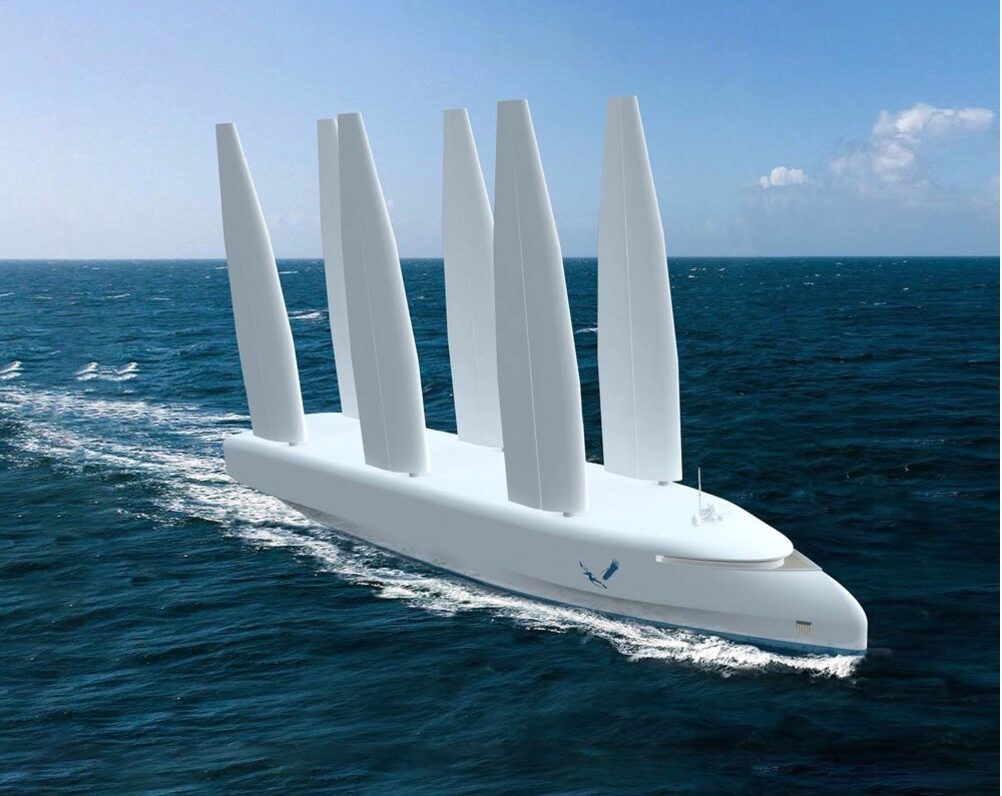Propelwind,a fast-track to absolute zero-emissions transocean trade with smart cargo handling solutions
Wind for main propulsion means using the wind only instead of the propeller during at least 85% of the time, with mechanical propulsion for back-up, unfavourable wind conditions and manoeuvring. Several wind routing simulations have shown that wind for main propulsion is actually possible for almost all trade routes globally, and faster than 10 knots with our unique solution.
Sailing at slow speed with the mechanical propulsion reduces the actual fuel consumption by more than 90% compared to similar vessels. Using only really green fuel allows then for a 100% emissions reduction.

The minimal green fuel quantity required on board solves easily the today’s supply chain and logistics issues, and reduces drastically the fuel cost uncertainty in the future.
In case diesel oil is used as back-up fuel at initial stage, calculations have shown that even with our small wind powered vessels the GHG footprint per cargo unit is a fraction of the footprint from today’s large, engine powered vessels.
In addition, PROPELWIND has developed innovative and efficient solutions for the cargo loading / unloading, storage and protection for our two initial markets: containers and vehicles, enhancing the vessels operational agility and cargo safety.
Above defines our comprehensive technology package, carved in stone thanks to a consistent suite of patents.
Think Big, Start Small, Scale Fast
Jim Carroll, futurist
PURPOSE
PROPELWIND is a concept development company working on economically viable zero-emission vessels using primarily wind for their main propulsion.
VISION
We want to get a significant impact on the global shipping emissions, vessels should be made available for different types of cargo and built in large series.
STRATEGY
Maximum use of wind through proven technology from ocean sail racing, applied to cargo ships. Integrate smart cargo handling to wind propulsion concept.
